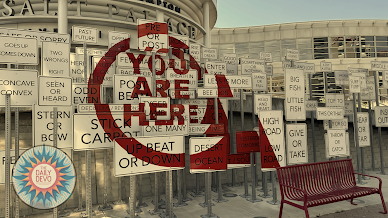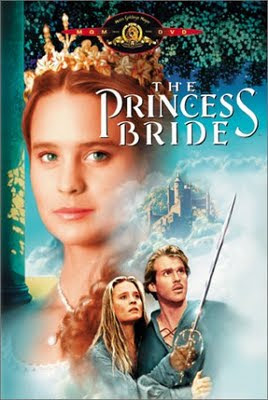You Are Here
I visited Salt Lake City, Utah, during my recent road trip. It is a city I've never experienced before but one I'd love to return to someday to spend more than just a day, which is all the time I had to visit.
I was pleasantly surprised by all that Salt Lake City had to offer and how forward-thinking and artsy it is. I guess I had preconceived notions about what I would encounter, considering how powerful the Mormon church is in that part of the world.
The locals that I met and hung out with later in the evening (who eventually convinced me to go sing karaoke with them until the wee hours) had some pretty harsh things to say about Mormons and Mormonism in general. Nearly all of them had been raised Mormon and had left the Church.
The city is beautiful and clean, with breweries, restaurants, and great nightlife. Signs and posters advertising Pride events from June were still up, and the public art I encountered was unique.
One art installation caught my eye, though. It was made entirely of street signs of all shapes and sizes, each containing two words or phrases with oppositional meanings.
There was "Work / Play," "Oil / Water," and "Sublime / Ridiculous," to name a few.
But what captured me was what was painted on the signs in the middle of the installation: a huge, red circle with an arrow pointed at a bench that read, "You Are Here."
The painted locator invites the viewer to sit on the bench amid competing ideas that often challenge us to choose one or the other. I accepted the invitation and sat down briefly to think about what I was experiencing.
In our current culture, it is difficult to sit in the middle of the tension created by oppositional ideas, which is what the art installation sought to project. But there is also a more profound truth that the art conveys: Each of us is full of contradictions.
Even those of us who want to believe the world is divided into "right" or "wrong" ideas and that we are always on the side of what is "right" have a lot more grey areas in our thinking than black-and-white.
Many people find sitting in the tension created by competing ideas uncomfortable. This is why we see such hard lines drawn around us, divisive politics permeating our cultural space, and people demonizing one another for being on the wrong side of things.
When an idea seeks to dehumanize, denigrate, and marginalize other human beings, it's slipped from being a competing idea to an immoral one. Reasonable people can see this.
But we must remember that we all have tensions regarding our worldviews. This should give us more compassion toward one another and more opportunities to engage in civil discourse about our differences.
Many Christians, probably more than most, must take this to heart.
Jesus spent much of his ministry demonstrating that hard-line religion, dogmatism, and a hyper-fixation of rules and regulations were not the way to go when seeking God's kingdom on earth.
He sat down to meals with outcasts but also dined with the religious elite. He demonstrated that dividing people into right/wrong, inside/outside categories was not something God was interested in at all.
Jesus often sat in the tension between competing ideas, offering a third way forward through compassion, acceptance, inclusion, and transformation.
Imagine if those who claim to follow Jesus sat in the tension rather than avoiding it. Imagine what could happen if Christians began seeing their grey areas more clearly. What kind of society could we create if we began modeling Jesus to the world around us?
May it be so. And may the grace and peace of our Lord Jesus Christ be with us all, now and forever. Amen.





Comments
Post a Comment
Thanks for leaving a comment! If you comment Anonymously, your comment will summarily be deleted.